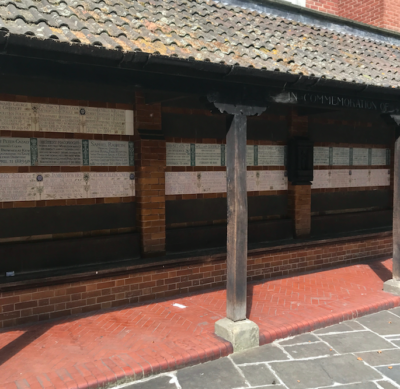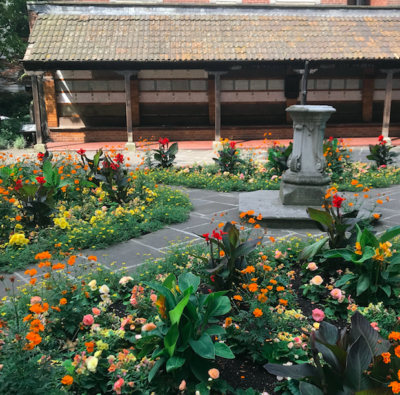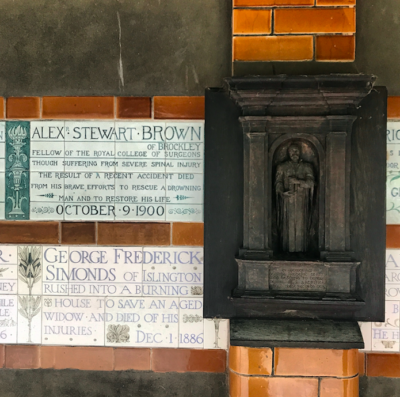 The Memorial to Heroic Self Sacrifice is a public monument in Postman’s Park in the City of London, commemorating ordinary people who died saving the lives of others. It is, in Watts’s words, a record ‘of the stories of heroism in every-day life’.
The Memorial to Heroic Self Sacrifice is a public monument in Postman’s Park in the City of London, commemorating ordinary people who died saving the lives of others. It is, in Watts’s words, a record ‘of the stories of heroism in every-day life’.
The monument was first proposed by G F Watts in 1887. On 5 September that year, he wrote an open letter titled ‘Another Jubilee Suggestion’ to The Times, proposing a scheme to commemorate the Golden Jubilee of Queen Victoria:
The character of a nation as a people of great deeds is one, it appears to me, that should not be lost sight of. It must surely be a matter of regret when names worthy to be remembered and stories stimulating and instructive are allowed to be forgotten.
It is not too much to say that the history of Her Majesty’s reign would gain a lustre were the nation to erect a monument, say, here in London, to record the names of these likely to be forgotten heroes. I cannot but believe a general response would be made to such a suggestion, and intelligent consideration and artistic power might combine to make London richer by a work that is beautiful, and our nation richer by a record that is infinitely honourable.
The material prosperity of a nation is not an abiding possession; the deeds of its people are.

It was another 13 years, due to difficulties securing a location and funding, until the monument was completed. In 1900 the Memorial to Heroic Self Sacrifice was unveiled by Alfred Newton, Lord Mayor of London, and Mandell Creighton, Bishop of London.
At that time it consisted of a 15m timber loggia designed by Ernest George, sheltering a wall with space for 120 ceramic memorial tiles to be designed and made by William De Morgan. The tiles include an inscription on a pale green base, flanked by a vertical panel of two repeated stylised patterns. Each panel summarises the act of heroism, predominantly performed by men, ranging from civilians to members of the Metropolitan police and fire brigade, as well as labourers and medical officers. Nine women are also memorialised, including one, Sarah Smith, who was a ‘pantomime artiste’.
At the time of opening, only four of the memorial tiles were in place. Watts died in 1904, at which point his widow Mary Watts took over the running of the project.
In 1906, after making 24 memorial tablets for the project, William De Morgan abandoned the ceramics business to become a novelist, and the only ceramics firm able to manufacture appropriate further tiles was Royal Doulton. Dissatisfied with Royal Doulton’s designs, and preoccupied with the management of the Watts Gallery and Watts Chapel, Mary began to focus her attentions elsewhere. Work to complete the memorial was sporadic and ceased altogether in 1931 with only 53 of the planned 120 tiles in place.
 In 2009, the Diocese of London consented to further additions to the memorial, and the first new tablet in 78 years was added.
In 2009, the Diocese of London consented to further additions to the memorial, and the first new tablet in 78 years was added.
Inspired by the Memorial to Heroic Self Sacrifice, artist Susan Hiller created a work in the early ’80s entitled Monument. Consisting of forty-one photographs of plaques from Postman’s Park combined with audio commentary from Hiller, Monument was acquired by Tate in 1994.
Tom Cornelius
Marketing Officer
Watts Gallery – Artists’ Village






